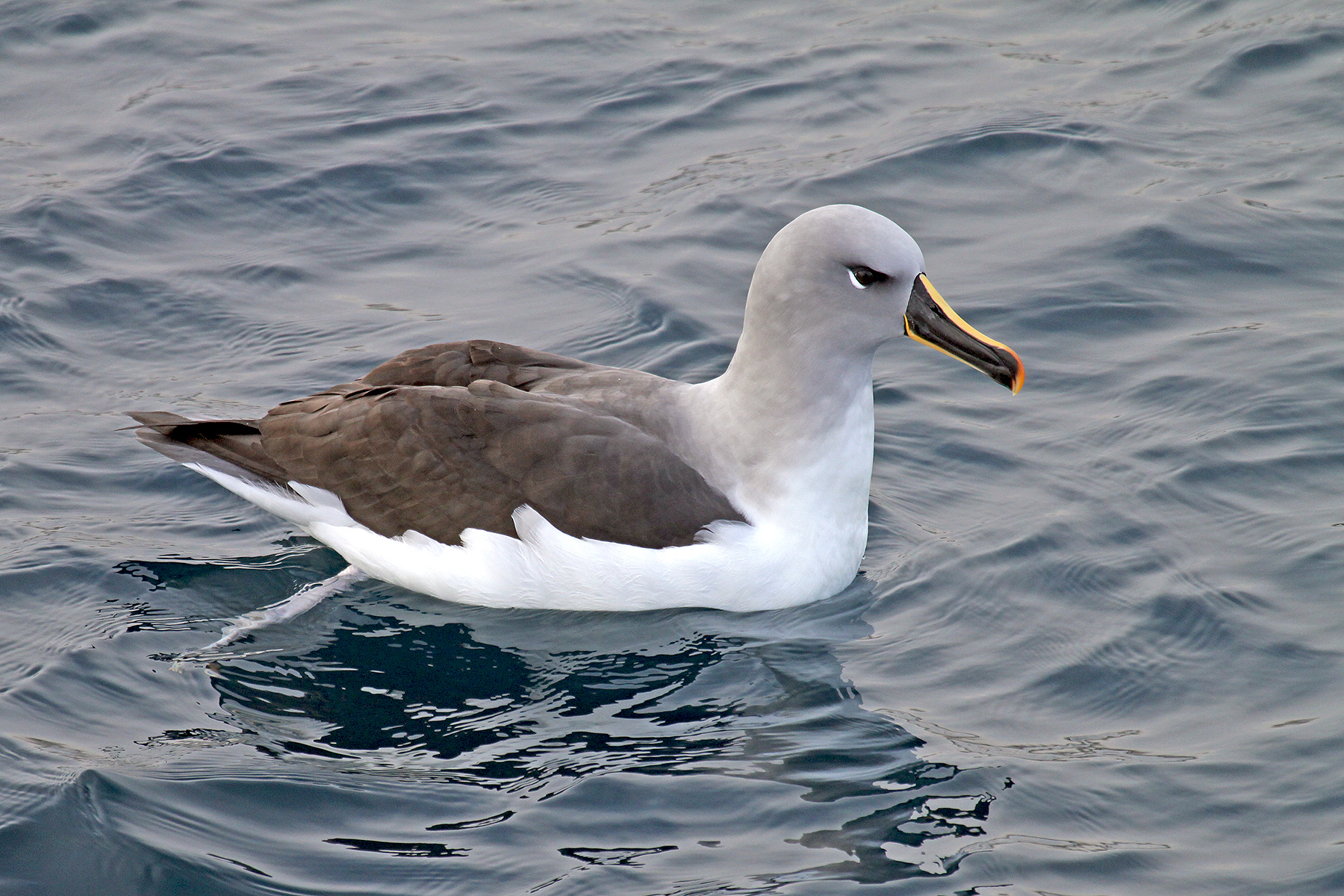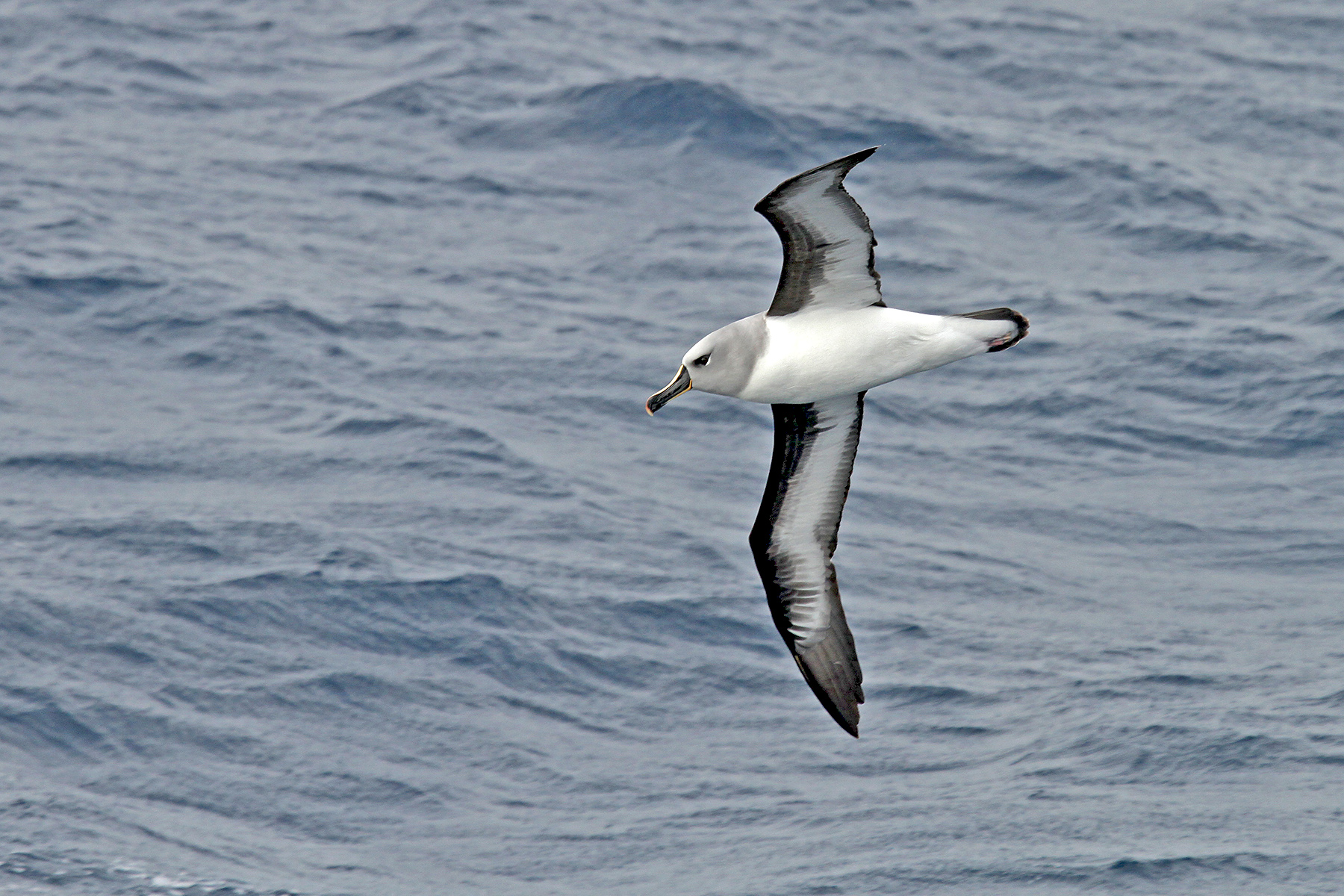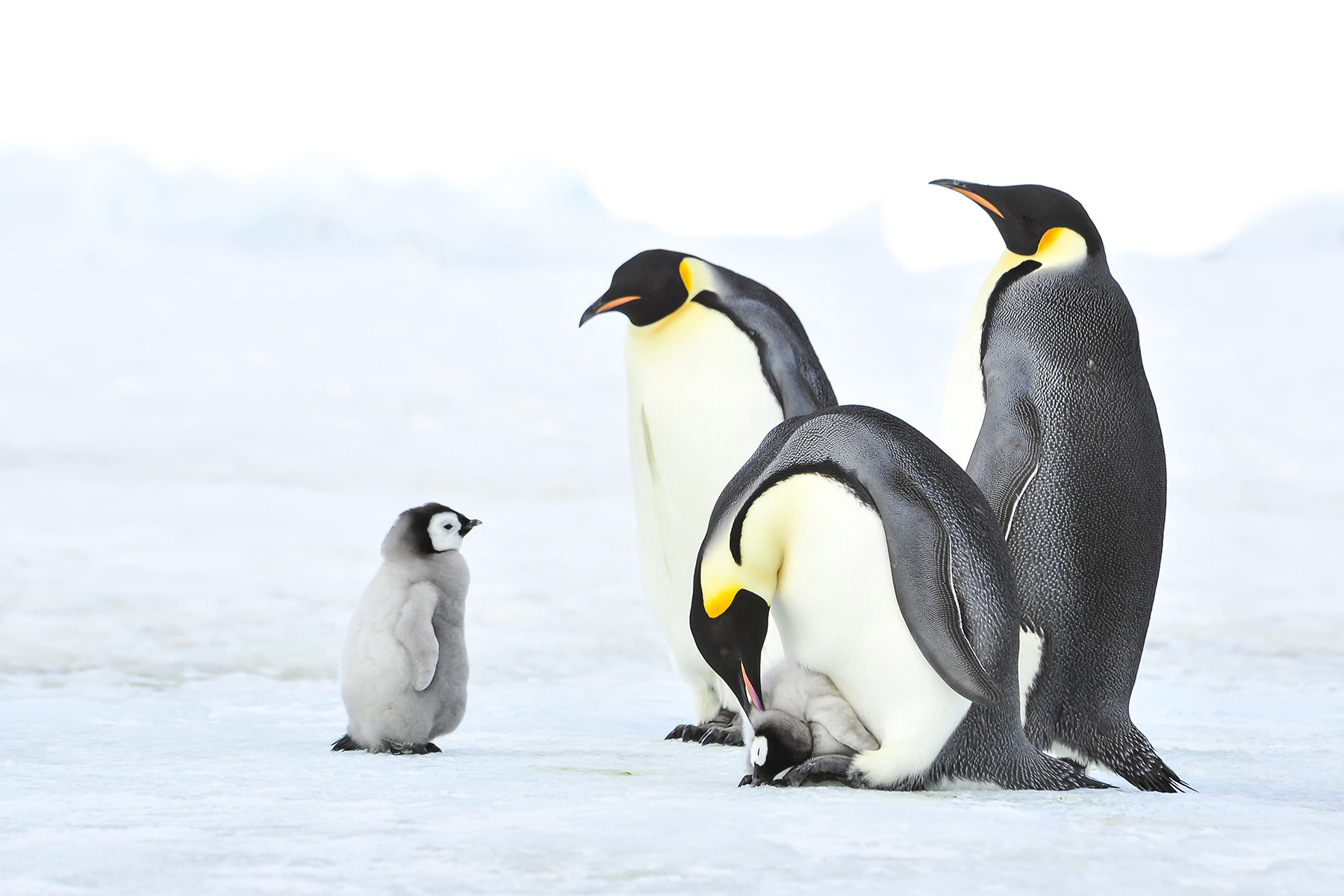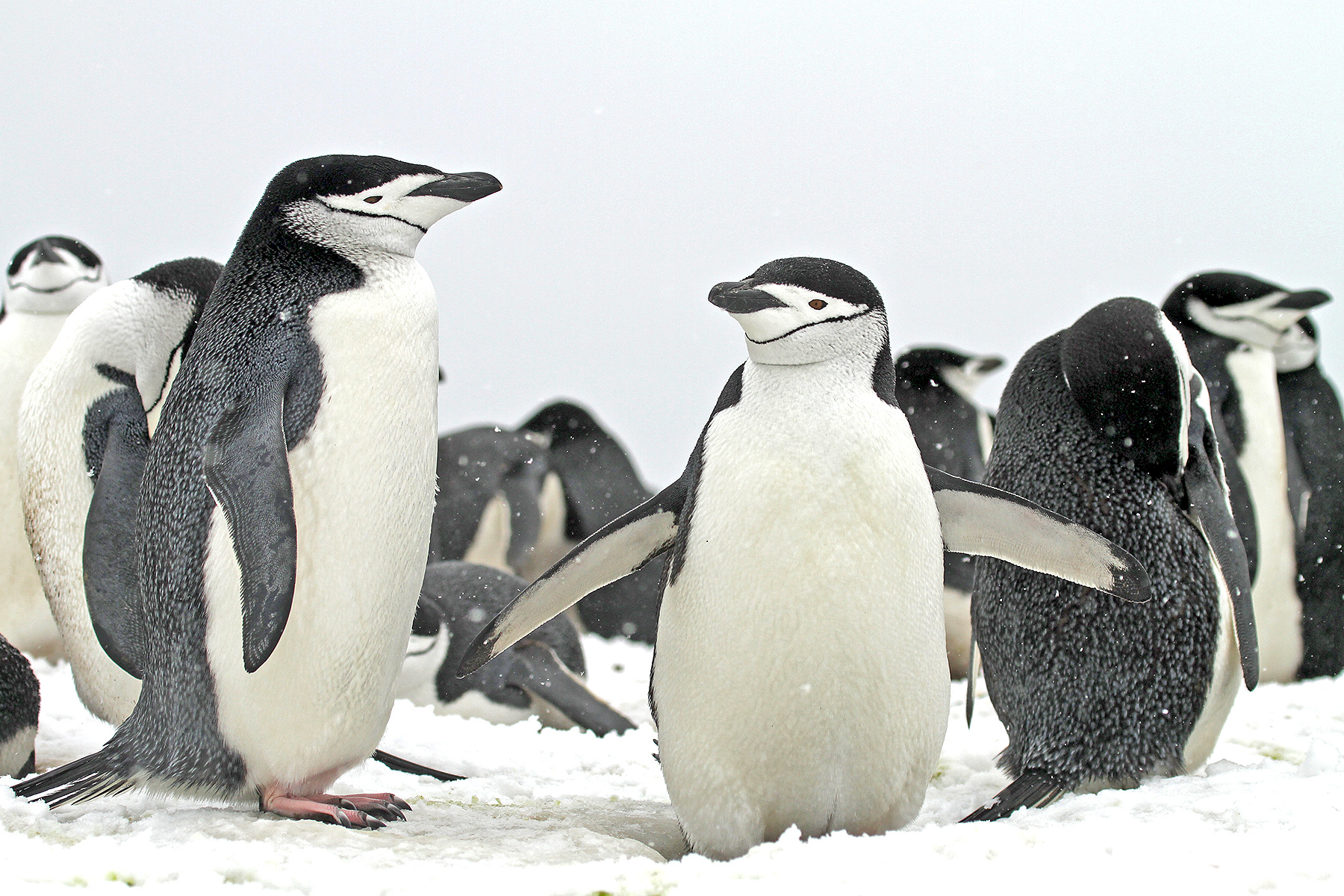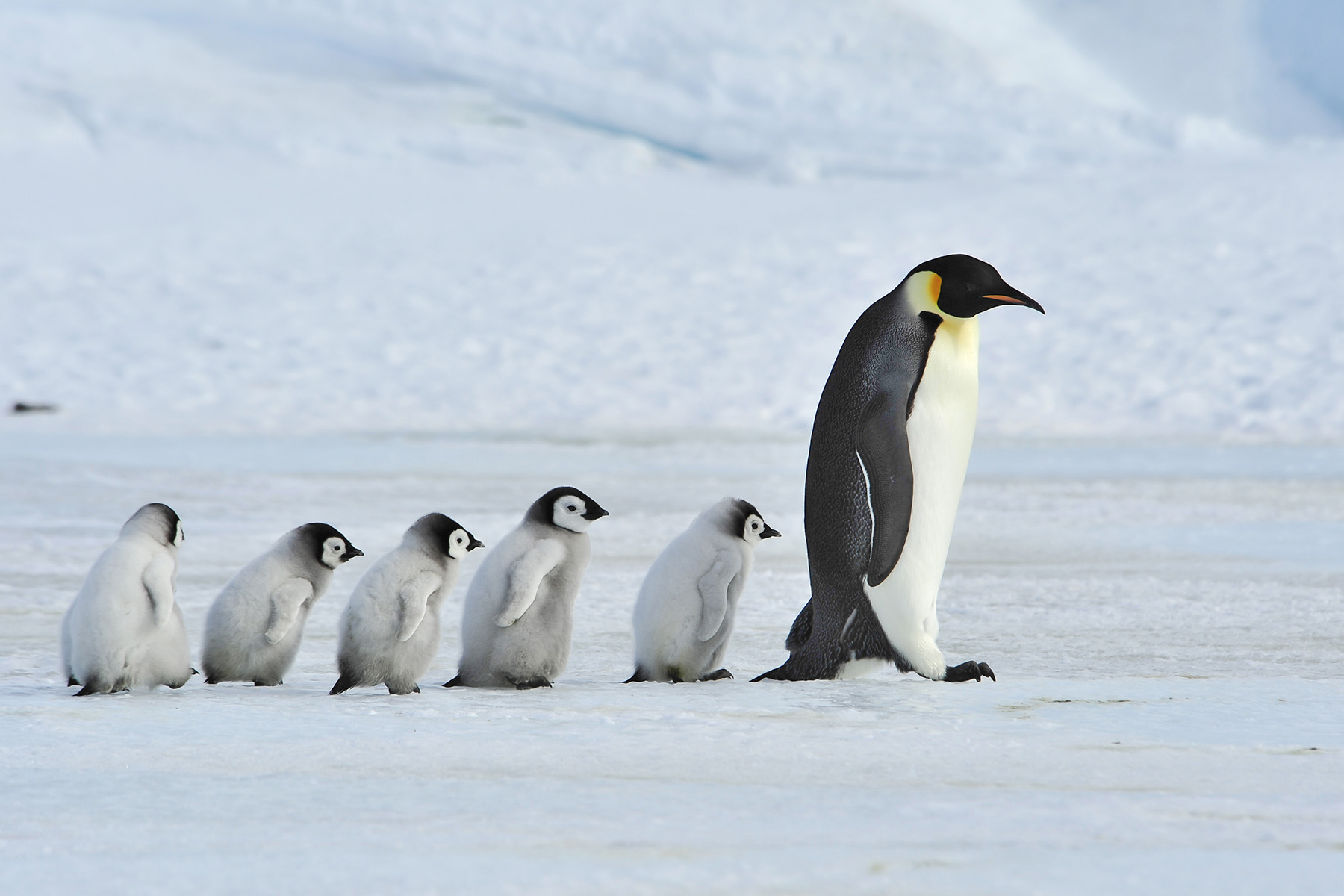ANTARCTICA: IN SEARCH OF THE EMPEROR PENGUIN BIRDING & WILDLIFE TOUR: DETAILED ITINERARY
Day 1 Our expedition to Antarctica begins this afternoon at Ushuaia, the southernmost town in the world, which is situated on the south coast of Tierra del Fuego, the ‘toe’ of South America, at 55 degrees south.
If it is clear during the flight south across Argentina to join the tour, you will be able to see the vast, arid landscapes of Patagonia far below and eventually the ice-clad spires and vast snowfields of Tierra del Fuego. Named by Magellan after the warning fires that the now-extinct Ona Amerindians lit when they saw his ships, Tierra del Fuego lies at the extreme southern tip of South America and is a wild land of grassland, windswept moors, stunted Nothofagus beech forests, snow-capped peaks and glaciers.
This afternoon we will board our ship before setting sail early this evening. We will spend the next 18 nights aboard. As we sail eastwards along the Beagle Channel, Magellanic Penguins, Black-browed Albatrosses, Southern Giant Petrels, Imperial and Rock Shags, Chilean Skuas, Kelp Gulls, South American Sealions and with a bit of luck one or two diminutive Magellanic Diving Petrels will be on show, but they are only an appetizer compared to the seabird glories of the subantarctic and Antarctica that still lie ahead.
Days 2-3 The sea crossing to Antarctica can often be a highlight of the voyage. As we travel ever further to the south we shall pass from the warmer sub-Antarctic waters that surround southern South America to the cold waters of the Antarctic. The line of demarcation between these two water masses is quite strongly pronounced and is known as the Antarctic Convergence. Here the upwelling currents create conditions ideal for plankton and the rich feeding attracts numerous seabirds and often cetaceans.
As we watch from the decks we will see an endless succession of seabirds following the ship, or sailing indifferently past, including Black-browed and Grey-headed Albatrosses, the graceful Light-mantled Albatross, enormous Northern and Southern Giant-Petrels, Southern Fulmar, Cape, Soft-plumaged and White-chinned Petrels, Wilson’s, Grey-backed and Black-bellied Storm Petrels, and Brown Skuas. We shall check the Slender-billed and Antarctic Prions for Blue Petrels, but the star of this ever-changing spectacle will be the greatest seabird of all, the Wandering Albatross, with its remarkable wingspan (up to 3.5 metres!). As we watch these huge birds gliding low over the sea between waves and then circling high into the air without even the slightest movement of their wings we will be witnessing one of nature’s ultimate creations in action – a bird which is in total harmony with its environment. We will also come across the confusingly similar Southern Royal Albatross amongst the Wanderings and be reminded just how difficult it is to separate some seabirds!
As we get closer our excitement grows and we shall keep a careful lookout for strikingly-patterned Antarctic Petrels amongst the much more common Southern Fulmars and Cape Petrels.
We also have a good chance of seeing whales, especially when we cross a bank where the sea depth decreases from over 4000m to under 200m, producing an upwelling that creates a plankton swarm highly attractive to whales: the most regular species here being Antarctic Minke Whale, Fin Whale and Hourglass Dolphin. If we are lucky we will encounter Gray’s Beaked Whale or Southern Bottlenose Whale. As we voyage southwards we will have a chance to listen to some fascinating lectures on the Antarctic environment and its wildlife or visit the bridge to learn about the many complex navigation instruments in use on our ship.
Days 4-7 As we pass through the Bransfield Strait, passing icebergs of immense size and awesome beauty, some white, others tinged blue-green by algae, we will watch out for the huge flukes of sounding Humpback Whales, the high dorsal fins of Killer Whales slicing through the water and the unobtrusive Antarctic Minke Whale. Here the silence is profound as the sun glows on ice floes dotted with Crabeater, Weddell and sinister-looking Leopard Seals whilst beyond is an endless vista of icebergs and distant, snow-coated mountains.
We will try to sail into the Weddell Sea through Antarctic Sound. If the passage is accessible and the ice does not prevent us from sailing further, we might see the huge tabular icebergs that announce our arrival on the eastern side of the Antarctic Peninsula.
During these days we will use the helicopters in our attempts to find individual Emperor Penguins. During our previous voyages we were always able to locate Emperors. We will also offer scenic flights and, providing the conditions allow us, helicopter landings on tabular ice-bergs and locations otherwise inaccessible so early in the season.
Possible landing sites include Brown Bluff, probably the most scenic spot in the entire northern tip of the Antarctic Continent. With steep canyon walls and tumbling boulders, an ice-cap looming above, and beautiful volcanic creations, the extraordinary scene is completed by the thousands of Adelie Penguins nesting on the slopes, and a few Gentoo Penguins mixed in for fun.
Helicopter flights are a great contribution to the voyage, for example on the west side of Antarctic Sound, an area usually only rarely seen from the air. The scenery is stunning with landscapes of layered sandstone, lava flows, glaciers tumbling into the sea and icebergs and pack-ice as far as the eye can see.
We should be able to observe individual Emperor Penguins on the ice floes, as well as Adelie Penguins. Cape, Snow and Southern Giant Petrels fly high in the sky, while Kelp Gulls, Brown and South Polar Skuas and Wilson’s Storm Petrels scavenge down below us. The landscape is dominated by jagged mountains piercing through the ice-caps and huge ice-falls.
A beautiful helicopter flight over huge blue icebergs and fast ice can also be made close to View Point in Duse Bay. We land on a rocky hillock close to an old refuge hut overlooking the bay. There will be still a lot of snow and ice, but much of the intended walk on the Antarctic continent will be over a beautiful frost-shattered rock, almost entirely covered with the most fascinating lichen of all shapes and colours.
If the ice-situation allows us to go further into the Weddell Sea area, we will visit Devil Island and Vega Island with its large colony of Adelie Penguins and a magnificent view for those hikers who can make it to the top of the hill. Melting ice sometimes provides spectacular waterfall from the cliffs close to point ‘Well-Met’. Further south, we may also visit Seymour Island, where many fossils can be found.
On our way north through Antarctic Sound we might pay a visit to the Argentinean station Esperanza on the Antarctic Continent. We will continue to look out for Emperor Penguins on the ice-floes. In the afternoon we may visit Gourdin Island, with three penguin species; Chinstraps, Gentoos and Adelies.
The alternative program for Days 5-6, if the route to Snow Hill Island is free of multi-year pack-ice (around a 30-40% chance) is:
The use of helicopters has a great advantage and can support us in our goal to reach the Emperor penguin colony, but the itinerary is ruled by the forces of nature, ice and weather conditions. If the conditions are favourable, we intend to spend these two days visiting the Emperor Penguin rookery. The helicopter flight duration is approximately 15 minutes. The helicopter can accommodate 6 passengers per helicopter flight. The landing point of the helicopters will be carefully chosen and we will make sure that the Emperors Penguins are not disturbed or stressed by helicopter noise. Therefore, after arrival, we will continue their expedition on foot. After a walk of approximately 45 minutes, we will experience an amazing rendezvous with the magnificent Emperor Penguins. Keep in mind that we are in the world’s most remote area and there are no guarantees, including a specific amount of helicopter time. Conditions may change rapidly, having its impact on the helicopter operation and passengers should understand and accept this. Safety is our greatest concern and no compromises can be made.
Day 8 Colonies of Chinstrap and Gentoo Penguins can be found throughout the Antarctic Peninsula and South Shetlands. We will likely make a landing at Half Moon Island in the South Shetlands, or at other very similar bird colonies elsewhere. Here, Brown (or Antarctic) Skuas will try to drive us from their territories by sweeping in low over our heads and breeding Wilson’s Storm Petrels zigzag over the talus slopes where Antarctic Shags nest. Wildlife photography opportunities are brilliant, with penguins pottering through the snow as they file down to the water’s edge, whilst others head inland to greet their mates at the nest
, display wildly to their fellows or steal stone’s from their neighbours’ nests. We may also come fairly close to saturnine-faced Weddell’s Seals hauled out on the ice.
The entry to Deception Island, through the aptly named Neptune’s Bellows, is just wide enough for our ship to navigate and here we will be accompanied by some of the numerous Cape Petrels that nest fulmar-like on the surrounding cliffs. Our anchorage is at Whaler’s Bay, an abandoned whaling station, inside a volcano whose cone caved in to be filled by the sea.
There is traditionally a chance to go for a (rather quick!) Antarctic swim here, in an area with some natural geothermal heating, but birders may prefer to concentrate on the bathing skuas or the nesting Cape Petrels.
Day 9 To the north of the Antarctic Peninsula lies the thousand kilometres (600 miles) of the Drake Passage, separating the Antarctic Peninsula from the curving tail end of South America. Crossing this historic waterway, named after the great English seafarer whose expedition almost came to grief in these wild waters, is an exciting experience and gives us our last chance to enjoy a host of albatrosses and petrels which have become so familiar to us during our Antarctic journey. Our second crossing of ‘The Drake’ will provide a fitting finale to our time in the great ‘Southern Ocean’.
Day 10 In the afternoon we should see the steep, rocky, greenish-grey headland of Cape Horn looming to the west whilst Sooty Shearwaters circle and dive, and Black-browed Albatrosses glide effortlessly down the troughs between the breakers. Here we have a good chance to see the rather uncommon Magellanic Diving Petrel.
This southernmost point of South America, named by the Dutch navigator Schouten after Hoorn, his birthplace in the Netherlands, has earned a reputation as one of the wildest places on earth. Here, at the meeting point of the Atlantic and the Pacific, the ferocious winds can whip the waves into a frenzy of spray, although in the southern summer it can sometimes be flat calm!
Day 11 This morning we return to Ushuaia. Here we will very reluctantly disembark from the ship we have come to know so well and which has brought us so many unforgettable memories. The tour ends on disembarkation.
TIERRA DEL FUEGO EXTENSION
You ought, as a sensible precaution in case of travel delay or lost luggage, have one or two nights in Ushuaia prior to the departure of the ship, so why not take the optional 2-nights extension and go birding and photographing in Tierra del Fuego?
Day 1 The extension begins this evening at Ushuaia on the island of Tierra del Fuego, where we will stay for two nights.
Day 2 Ushuaia is situated at 55 degrees south and is the most southerly city in the world. Although the bird diversity at this latitude is low, the quality is outstanding.
During our stay at the veritable ‘End of the World’ we will, explore both the immediate vicinity of Ushuaia and nearby Tierra del Fuego National Park, a spectacular region of seacoasts, forests, lakes and snow-capped mountains on the Chilean border.
Specialities of southernmost South America we should encounter amidst the wonderful scenery of the Ushuaia area include the attractive Upland, Kelp and Ashy-headed Geese, the bulky Fuegian (or Flightless) and Flying Steamer Ducks, Chiloe Wigeon, Imperial and Rock Shags, Great Grebe, the handsome Black-faced Ibis, Blackish and Magellanic Oystercatchers, Southern Lapwing, Dolphin and Brown-hooded Gulls, South American Tern, Chilean Skua, the huge Magellanic Woodpecker (usually positively easy to find and get close to in this area), Austral Parakeet, Chimango Caracara, the localised White-throated Caracara, Dark-bellied Cinclodes, White-throated Treerunner, Thorn-tailed Rayadito, Chilean Elaenia, Fire-eyed Diucon, Austral Negrito, Chilean Swallow, Austral Thrush, Long-tailed Meadowlark, Black-chinned Siskin and the handsome Patagonian Sierra Finch.
Other, more widespread, birds that we may well encounter include Crested Duck, Yellow-billed Teal, Black-crowned Night Heron, the splendid Andean Condor, Black-chested Buzzard-Eagle, Variable Hawk, Kelp Gull, Southern Crested Caracara, Ringed Kingfisher, House Wren, Correndera Pipit and Rufous-collared Sparrow.
Day 3 After some final birding around Ushuaia this morning, we will embark this afternoon on our Antarctic adventure.










